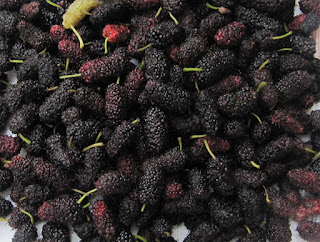The most distinguished event to take place on the
planet Earth was the origin of life and its evolution into all forms of living
beings that existed in the past and those which survived to the present.
Even by the most wild of human imagination life on the Earth could not have been what we see it, and take it for granted.
Imagine a situation, that you may believe, life could
not have existed under a particularly harsh environment. To your surprise, on an
investigation, it will reveal you that life does exist under that environment, and
is thriving!
The plasticity
of living beings to adapt and evolve over time in any niche is truly amazing
and speaks of the inherent capacities that the living organisms have.
Sadly, thousands of species of organisms have been made
extinct by natural events, and continue to be wiped out from the planet due to human
interference with the natural environment and its unique ecosystems.
Our entire existence on this planet is dependent
upon the biodiversity resources. While material resources are of economic
importance for development related activities, these no substitute to the
services provided by biological resources.
Biological resources provide ecological, environmental,
dietary and energy needs which can’t be replaced by any other natural or
man made resource. Plants fix the energy derived from the Sun in the form of food.
In our food chain all energy derived ultimately comes from the energy fixed by
plants.
During any development activity, while large trees
and water bodies may be seen as those directly affected, there are on the ground,
or under the soil, a plethora of organisms which are uprooted and destroyed.Landscape planning and development needs to consider biodiversity protection.
In the soil inhabit large number of microorganisms
such as bacteria and fungi, known and unknown, and small arthropods (insects,
spiders, centipedes, scorpions) that may be destroyed in the land under
development.
How careful are development or other agencies when
the farms are converted into residential colonies to investigate beforehand the biodiversity of the
area, no matter how big or small is the project. This micro-planning is almost
absent everywhere?
During the development of a site, agencies
occasionally come across a wide variety of worms wriggling out from within the
ground. Most often, there are no means to report, catalogue, identify and preserve
those organisms found during development.
Molecular
Biology versus Systematics and
Classification:
We hear of human research endeavors to the far off virgin
lands and discovery of new species but we ignore the unreported species right
under our feet.
I had found a
small frog of the size of a housefly which I was unable to identify. Initially,
when I first sighted it, I was not able to identify it because it was tiny, climbing
over the tiles of my bathroom.
I could realize it was a frog only when I put on my
glasses. A yellow-colored frog of a very small size. It had a yellow pattern on
its skin. There could be more wonders in our places. What about facilities to
readily identify such new discoveries.
The current studies in biology are dominated by a
greater focus on molecular and genetic approaches. We notice that there is ignorance
of what genetics ultimately manifests and empowers: a full blown and thriving organism.
While it is important to know the underlying
molecular functions of a living being, it is equally important to search,
identify, classify and protect species which are under stress and have the least
chances to survive.
During a development activity, therefore, it is
important to keep a vigil by those interested in biodiversity preservation and
protection, about the discovery of a significant population of a species in the
area under development.
All such displaced organisms must be identified and
relocated in the same area or a similar ecosystem.
